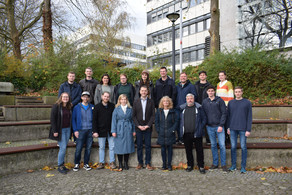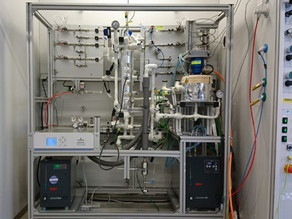Kinetic modeling of dynamically operated heterogeneously catalyzed reactions: Microkinetic model reduction and semi-mechanistic approach on the example of the CO2 methanation
M. Langer; D. Kellermann; H. Freund
Chem. Eng. J. 467 (2023) 143217
Abstract
As the production of green hydrogen from fluctuating resources and the use of Power-to-X technologies become more and more important in the energy sector and the chemical process industries, the interest in dynamically operated reactors is increasing. In order to apply model-based optimization methods for process intensification the dynamic reactor behavior needs to be predicted sufficiently accurate by the underlying model equations, in which the reaction kinetics play a key role. Microkinetic elementary step models are able to describe the dynamic behavior on the catalyst surface. However, these models are laborious to derive, parameterize and require comparably high computational effort to solve. For these reasons, simpler semi-mechanistic kinetic models based on a rate determining step at steady state conditions are much more frequently applied in numerical studies. However, the underlying assumptions of these models are questionable for dynamic operation since sorption processes and possible changes in the reaction mechanisms are not considered. We present a semi-mechanistic kinetic model approach boased on so called rate-affecting steps and the dynamic change in surface coverages, which is able to describe the dynamic behavior of the catalyst surface. The applicability of our approach is demonstrated for model reduction of an elementary step mechanism developed for the COx methanation and for kinetic model development with synthetic experimental data. Both methods result in a kinetic expression that can accurately reproduce the dynamic kinetic behavior predicted by the elementary step model, with a significant reduction in computational effort for our new semi-mechanistic model, making this new class of model approach attractive for model-based optimization applications.




